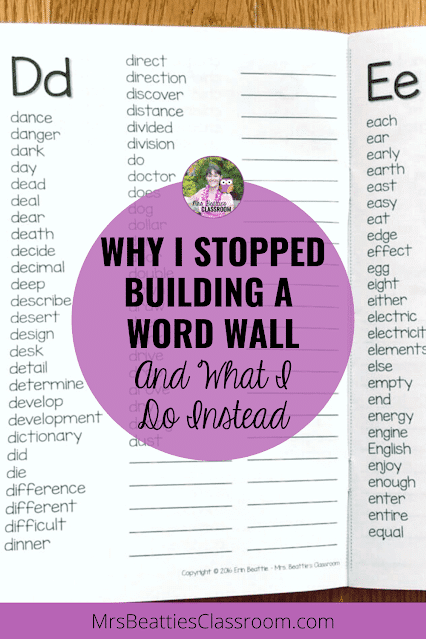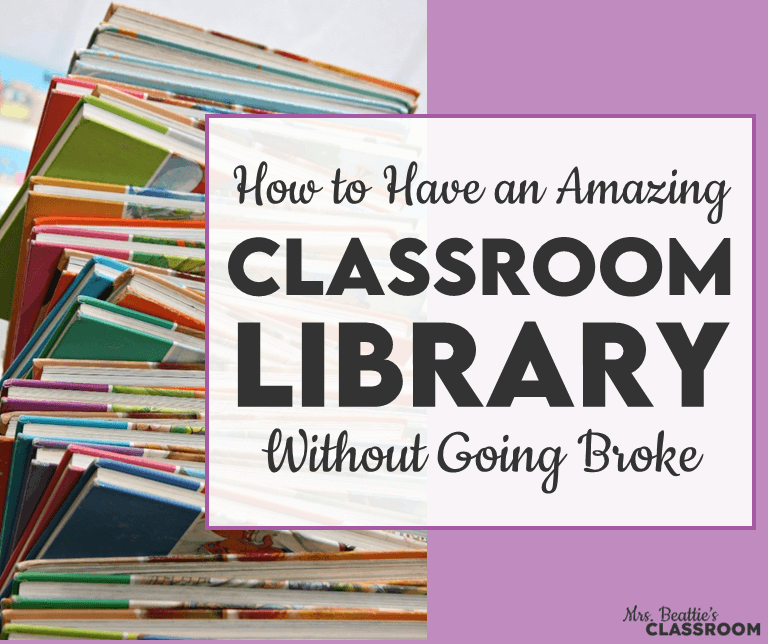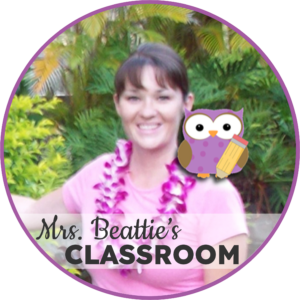If you’ve been in a primary classroom recently, chances are you’ve seen a word wall. While I believe they are an essential part of an early primary classroom, they may not be the best choice when students get to second and third grade. Here’s why I stopped building a word wall and what I actually do instead.
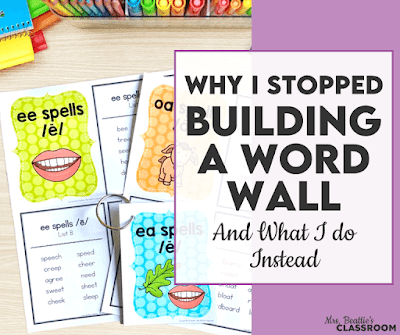
What is a word wall?
A word wall is a collection of words placed on the classroom wall using letters large enough for most students to see from their place in the classroom. It is usually organized alphabetically and built with the students throughout the school year. The word wall is often the focus of word work activities and lessons.

Why I Stopped Building a Word Wall
When I first started teaching a split 2/3 class, I had a word wall. That’s what’s expected, right? Doesn’t every primary classroom have one?
I quickly realized that the word wall only served the needs of some of my students. It left behind my struggling students, high-achieving students, and students with vision and attention problems.
My word wall also took up a LOT of space. More than half of my board space on one wall was exclusively used for it, meaning that I couldn’t use that space for other instructional purposes! It feels like a massive waste of space when the word wall is mostly empty at the beginning of the school year!
As the year progressed, I also noticed that my students used the wall less and less during their independent work. Students with vision or attention issues had difficulty locating the words they needed as the word wall filled up, and I had more and more students asking me how to spell a word already there.
What I Do Instead
I now use two main resources instead of a word wall. Both have different purposes and are used every day.
Personal Student Dictionaries
At the beginning of the year, I give each student a personal dictionary or word book. I created two levels so I can discreetly differentiate the words my students receive. The lower level contains high-frequency words from pre-primer to third grade, and the upper level has over 1000 of the most commonly used words in the English language, plus extra things such as plural rules and contractions.
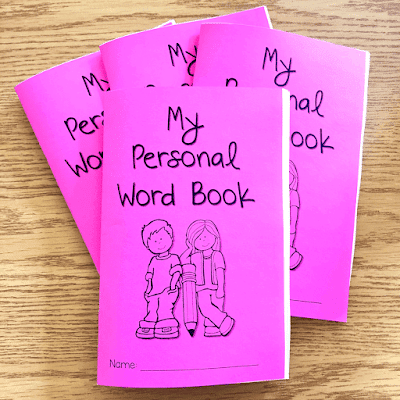
When I assemble the booklets, I use the same cover for both versions to give each student the words that will be most useful to them.
Each book contains many words the students may use in their writing and lots of extra space for them to write new words. My students are engaging with the words that are meaningful to them.
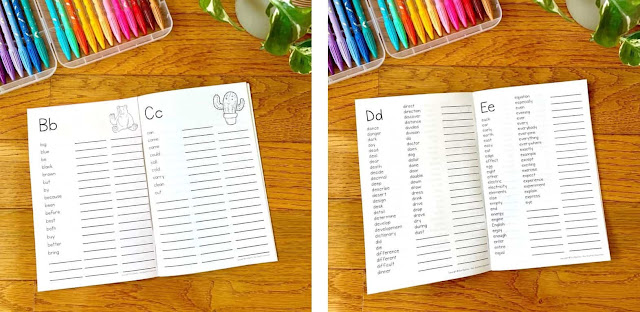
These are kept in student desks to be used anytime during the day without fuss. My students pull these out during writing and during subjects like science and social studies or during reading to collect words they read that they would like to try and use in their writing.
Differentiated Word Lists
Even though I don’t have a word wall, I do have a word work program. We still learn about spelling patterns and letter sounds and practice working with words daily. For this time, we use my Differentiated Word Lists.
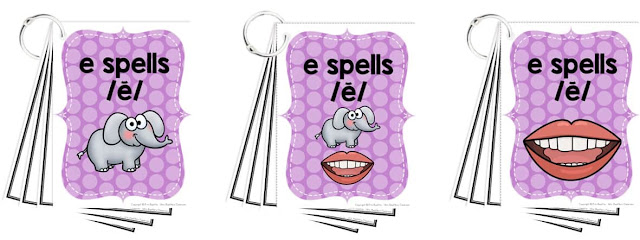
I have created over 420 lists for use during these activities! When working on phonics activities, my students can access three differentiated lists for each spelling pattern. Having three levels to choose from allows my students to select a level where they feel comfortable or one that challenges them a little bit. The power of choice in learning is huge!
These lists are condensed to contain ten words on each small page per level and stored on a ring. That’s 30 differentiated words to meet the needs of all students using a quarter of a sheet of paper. My students grab a ring during work time and take it to their workspace, returning it when they finish.
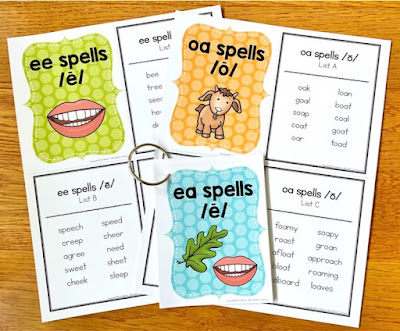
The great thing about these lists is that they can be used in various ways! You can build the sets by sound with the three levels together or assign levels to each student and create student sets instead. I’ve always preferred to leave the levels together to give my students a choice and opportunity to take risks independently.
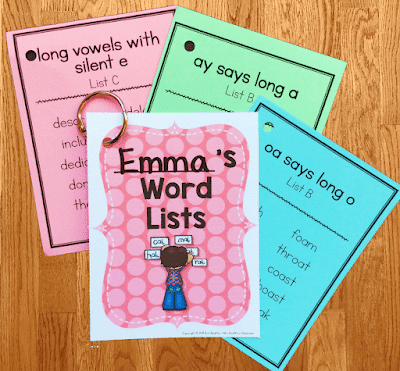
While a word wall definitely has its place in the early primary grades, these alternatives have proven far more beneficial to my students. I continue to use the personal word books with fifth and sixth-grade students today!
If you’d like to try these Differentiated Word Lists, you can grab a FREE sample here:

Click the links below to get started with these Personal Dictionaries and Word Lists in your classroom.
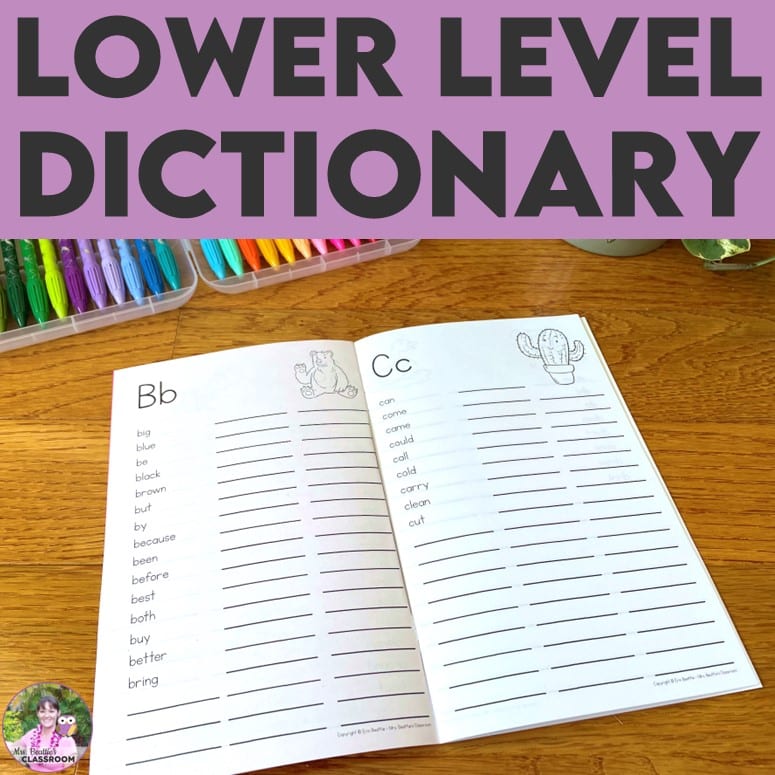
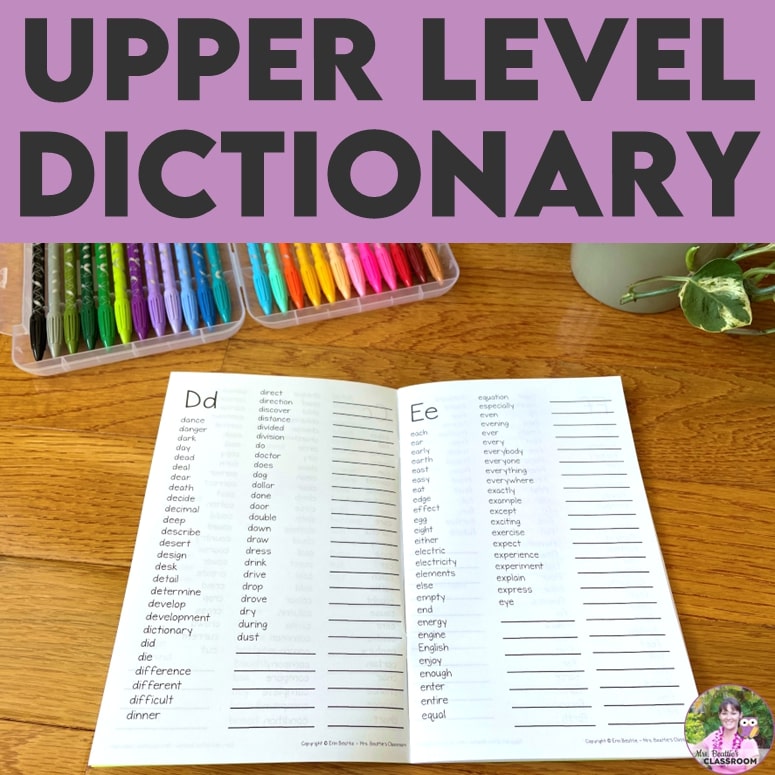
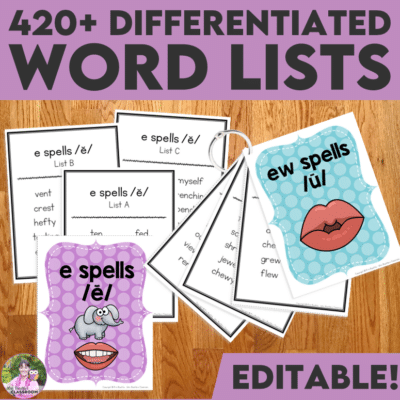
Read more about my word work program in this blog post:
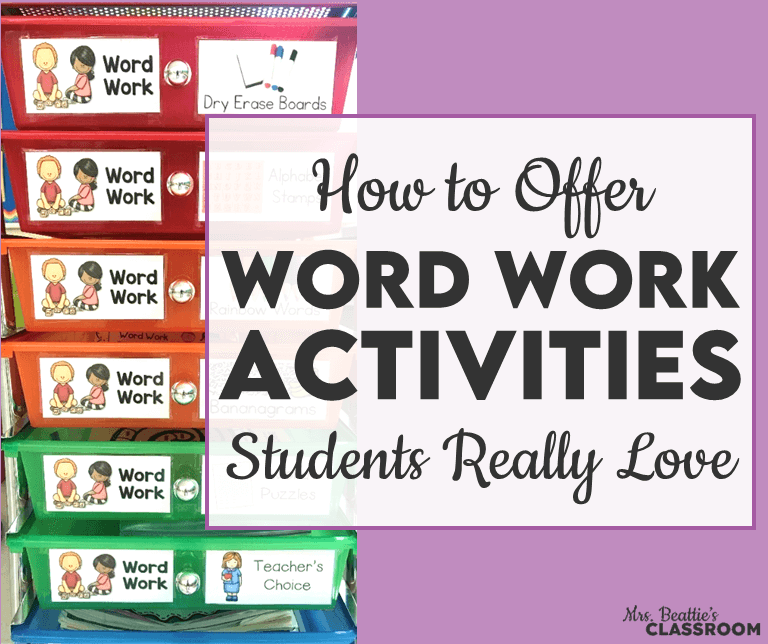
If you have enjoyed this post, please share it with friends and colleagues on Facebook or pin it on Pinterest:
